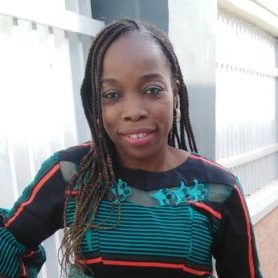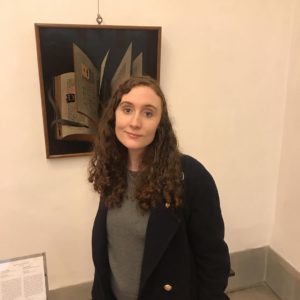Looking across geographic and temporal boundaries, this roundtable investigates the ideological implications of witches on-screen.
Opening the discussion, Mary Okocha considers the ways in which Nollywood film producers have authored mythical imaginings of witches that rely on stereotypes of age, gender, physical features, and mannerisms. She considers questions of authorship and reception, asking: if witches are “never do-gooders,” what then are members of the audiences being told/taught; of what benefits are these witches to the society; and is there a need to keep crafting these images, especially in the same manner?
Ela Przybyło and Breanne Fahs similarly think through stereotypical representations of the witch. Using an anti-misogynist, anti-ageist, and antiracist aging-femme theory, they look at witchy aging femmes and witch-spinsters to better understand how femmephobia and ageism intersect. They argue that an aging-femme theory is needed to make sense of witches as figures of feminine aging excess in Western film.
Moving from aging witches to witchy teenagers on-screen, Miranda Corcoran starts her investigation with Marion L. Starkey’s 1949 historical study “The Devil in Massachusetts: A Modern Enquiry.” She shows how Starkey’s anachronistic representation of Salem’s ‘afflicted girls’ as cliquish, hormonal teenagers represents an effort to comprehend the contemporary phenomenon of the teenage girl using a language of witchcraft and wonder. From this discussion, she moves on to explore how a myriad of diverse writers, artists and filmmakers employ the figure of the teen witch as a trope through which the new, often contentious, category of the teenage girl could be comprehended.
Speakers:
Mary Okocha, "Crafting the Witches: A critical appraisal of Nollywood's portrayal of witches"
Mary Okocha obtained her B.A and M.A. degrees in Theatre Arts from the University of Ibadan, Nigeria, specialising in Media Arts. She worked for several years in Ibadan, Nigeria, as a broadcaster with Federal Radio Corporation of Nigeria. She teaches courses in media and communication studies. Mary obtained her PhD in Media and Cultural Studies at the University of KwaZulu-Natal, South Africa. Her thesis was a transnational ethnographic study of audiences of Nigerian films in Nigeria and Durban, where she sought to understand ways in which they make meanings from the movies they watch. She has conducted researches with local and international publications in the areas of Communication, Film studies, Arts and Culture. Mary has flair for topics in African Culture, Media and Film, Media Audiences, Arts and Performance.
Ela Przybyło and Breanne Fahs, "Aging-Femme Theory through Filmic Representations of Witches"
Ela Przybyło is Assistant Professor in English and Women’s, Gender, and Sexuality Studies at Illinois State University. She is the author of Asexual Erotics: Intimate Readings of Compulsory Sexuality (Ohio State University Press, 2019), editor of On the Politics of Ugliness (Palgrave, 2018), and author of many peer-reviewed articles and chapters.
Breanne Fahs is Professor of Women and Gender Studies at Arizona State University. She has published widely in feminist, social science, and humanities journals and has authored five books: Performing Sex (SUNY Press, 2011), Valerie Solanas (Feminist Press, 2014), Out for Blood (SUNY Press, 2016), Firebrand Feminism (University of Washington Press, 2018), and Women, Sex, and Madness: Notes from the Edge (Routledge, 2019).
Miranda Corcoran, "Positioning the 'teen witch' in twentieth- and twenty-first-century popular culture"
Miranda Corcoran is a lecturer in twenty-first-century literature at University College Cork. She is currently writing a monograph on adolescence and witchcraft in American popular culture. She is also the co-editor (with Steve Gronert Ellerhoff) of Exploring the Horror of Supernatural Fiction: Ray Bradbury's Elliott Family (Routledge, 2020).


